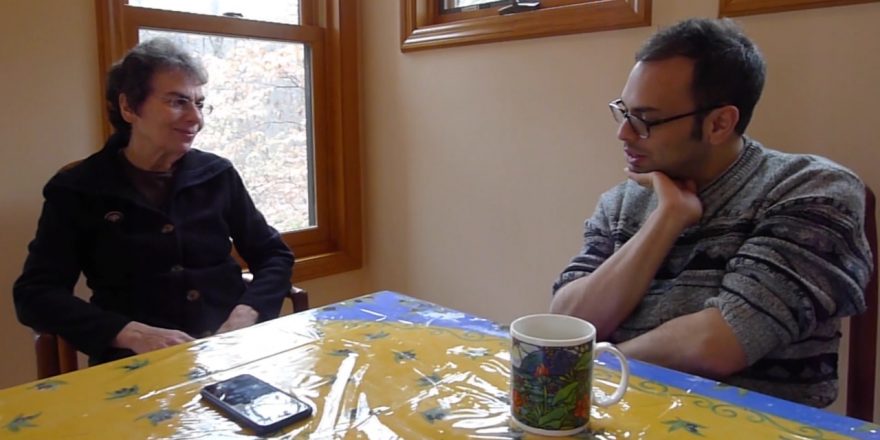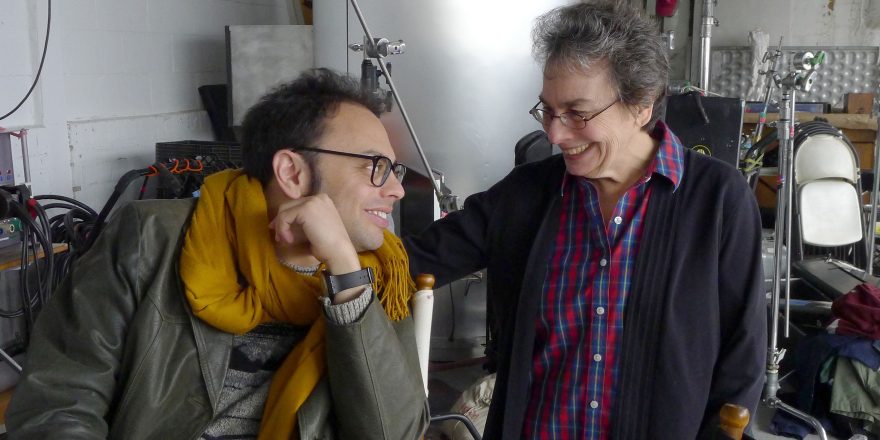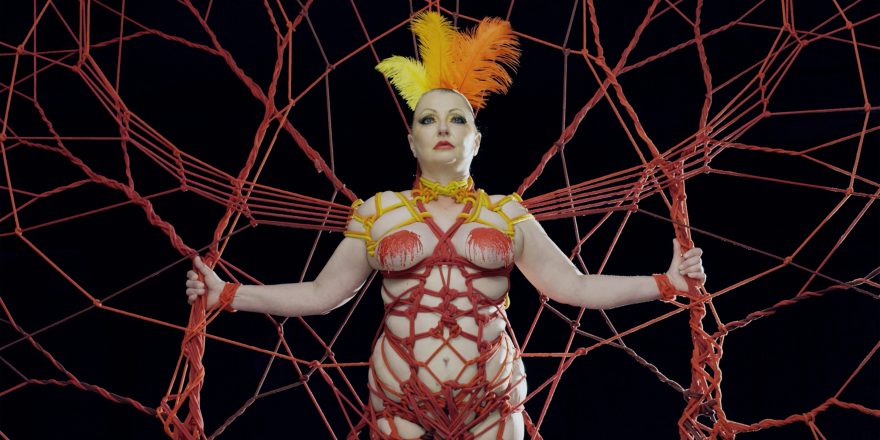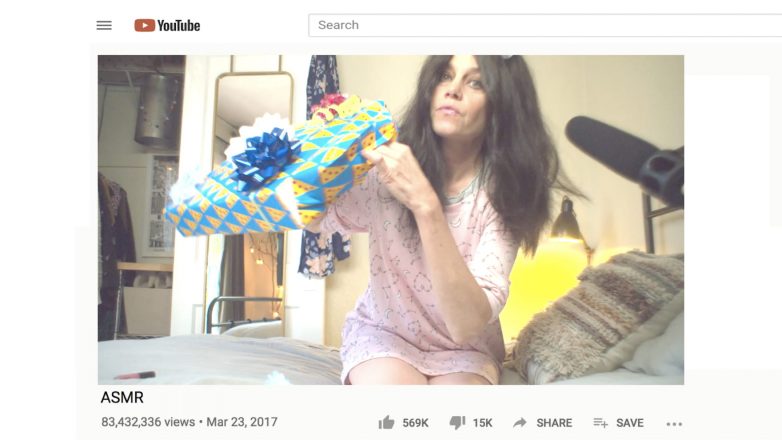I suppose my filmmaking career began when I pranked my Bulgarian mom when I was 10. I carefully composed a shot with a Hi8 camera on a dresser, so that at 2 a.m., when I screamed as if I was about to get murdered, my mother would be perfectly framed when she entered my bedroom. She stormed in half asleep, in complete terror, wearing a threadbare nightgown, and it was all perfect. I laughed so hard that it hurt. This was the first of many videos I would create starring my parents. Since that night, they’ve been in most of the work I’ve made to this day, including but not limited to a cameo in a music video for The National’s “I Need My Girl” and, most recently, the series I’m creating and directing, Who’s Annie?
It’s not like I was one of those brilliant children that had a passion for film at a young age. I had no idea what I was doing or why. My fantasies for the future didn’t go much deeper than wanting desperately to get out of Flushing and have a lot of money. I was captivated by movies and television, but I never considered the possibility that I could one day be a filmmaker.
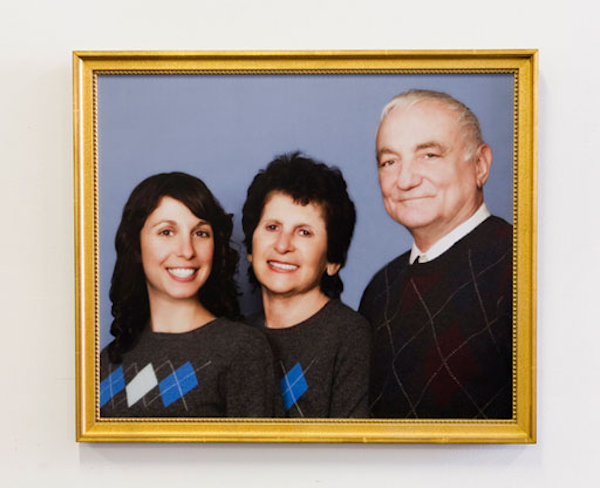
ABC’s TGIF line-up was my first love. My obsession was sitcoms because they showed me a version of family that I felt I was being deprived of. Being first generation, having a Bulgarian mom and Greek dad, all I wanted was to be grounded for sneaking out of the house, eat ice cream because I got my tonsils taken out, and have my parents sit me down for an important life lesson. I was learning what the ideal American family was supposed to look like and it didn’t include a refrigerator full of yellowing Tupperware containers with things like slimy roasted peppers, eggplant mush, and cow tongue.
My experience growing up in that house felt so singular that it was isolating. Maybe I need to back up to the 1940s for a moment to paint a clearer picture. My ancestors were all displaced or killed during the Holocaust when my parents were small children. There are several wild stories my parents have shared about this time, including how my mother survived pneumonia while Jews were being denied healthcare, and when my father rode a mule to escape Greece, ending up in a Turkish prison at age seven.
My parents eventually ended up in what was then Palestine, and had a “meet cute” in their 20s on a bus, when my mom was struggling to open a window. They married, had two children, and when my sister was 12, they came to New York in search of a better life. Shortly after moving, their son, my brother, died tragically at age five. This was the darkest of times for my family, after years of loss and suffering. That’s when my mother decided to have another child in her 40s, which was considered a moonshot back then.
From birth, it was not lost on me that if it weren’t for all the trauma they experienced, I wouldn’t be here. I felt like my purpose in life was to cheer them up and be their happy American miracle child. Sitcoms are very fucking happy. Even the Very Special Episodes about eating disorders, drugs or teen pregnancy, would pale in comparison to my inherited grief, so in my early teens, I started reenacting sitcom scenes with my parents. This practice would continue through my 20s.
I used scripts from classic sitcoms like Who’s the Boss, Full House, The Cosby Show and Family Ties. I moved the couch so that the back of it was facing the staircase, put together costumes and got to work. I fed them their lines, directed their movements and edited scenes so you could see the strain of the attempts made to try to be these characters. At the same time, the very act of us reenacting sitcoms achieved the family connection I was looking for. We were also collaborating, laughing and actively enjoying each other’s idiosyncrasies. There was evidence that I was seen and heard by my parents, plus now I could present them to an audience and have them be part of my world outside their house in Flushing.
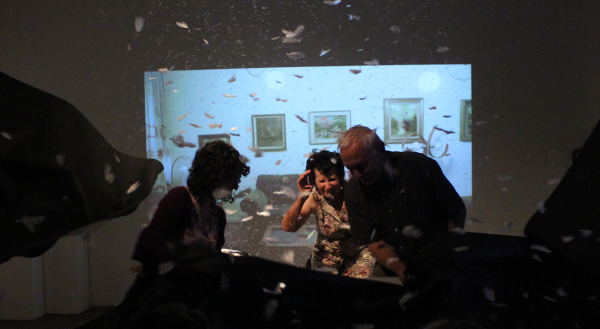
My mom and dad were my favorite actors and nobody had access to them the way I did. Even though they were sometimes reluctant, my parents agreed to star in anything I came up with. They became lively, animated comedians for the duration of the shoot. To get that studio audience laughter, about 15 years ago I started doing live performances with my parents at art venues. We often performed these live shows in front of a video backdrop of my parents’ living room or kitchen, and I would direct my mom and dad to dance, sing, scream and even burst out of a banner like before a football game.
I turned the last live performance I did with my parents into a gameshow. I challenged my mother to figure out which “Sophia Peer” was the real one. Three actors pretending to be me joined me on stage and answered my mother’s questions from the other side of a screen, through a voice-modifying mic.
I put out a Craigslist casting call to find the fake Sophias, and through that I met the woman who I would later decide to create a series about, Annie Pisapia. She responded to the post with a video titled “yellow dress funny” that featured her pretending to get high off some sort of candy, with her dog joining her on the couch. I immediately knew I had to work with Annie.
Our first meeting was at a Burger King in Queens, close to where we both grew up and where my parents still live. Annie opened up to me about having a difficult past including abuse, addiction and incarceration. She was starting her acting career in her 50s with no training, experience or connections.

I saw parallels between her journey into acting and my path into filmmaking. We both wanted to take all the hardship we experienced and turn it into television, and we needed to do it regardless of any obstacles. I decided to create Who’s Annie?, a series that is both about and starring Annie, which would give her all the leading roles she was looking for, including playing herself.
Like my parents, Annie was willing to take on any role, no matter how much of a stretch. No, my dad isn’t Tony Danza and Annie isn’t a young, pious farmer’s wife, but we’re able to suspend reality when we see it on screen. The language of television also allows us to accept and celebrate people that we might normally overlook in real life. My intention is to give the spotlight to people who can represent themselves in a medium that doesn’t represent them. This isn’t Maggie Gyllenhal playing a sex worker from Queens in The Deuce. This is the voice of the actual person who went through these struggles, reenacting some version of their life within a cinematic world. Since Annie and I started working together, I have been telling her story the way I have been telling my parents’ story my whole life: stylized and with levity, just like all the television I grew up with.
Featured image shows Sophia Peer with her parents; all images courtesy Sophia Peer.





